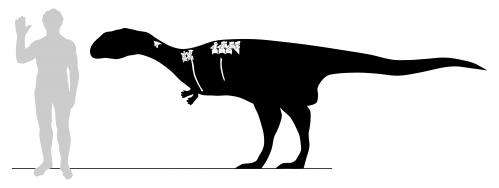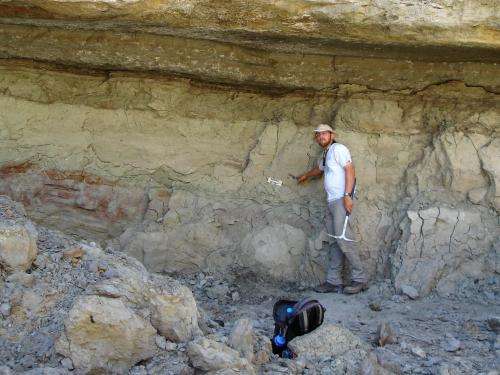New carnivorous dinosaur from Madagascar raises more questions than it answers

The first new dinosaur named from Madagascar in nearly a decade, Dahalokely tokana was a carnivore measuring 9-14 feet long. Its fossils were found in 90-million-year-old rocks of northernmost Madagascar, from the time when Madagascar and India were a single isolated land mass. Dahalokely is potentially ancestral to later dinosaurs of both regions, and shortens a 95-million-year gap in Madagascar's dinosaur fossil record by 20 million years.
The first new species of dinosaur from Madagascar in nearly a decade was announced today, filling an important gap in the island's fossil record.
Dahalokely tokana (pronounced "dah-HAH-loo-KAY-lee too-KAH-nah") is estimated to have been between nine and 14 feet long, and it lived around 90 million years ago. Dahalokely belongs to a group called abelisauroids, carnivorous dinosaurs common to the southern continents. Up to this point, no dinosaur remains from between 165 and 70 million years ago could be identified to the species level in Madagascar–a 95 million year gap in the fossil record. Dahalokely shortens this gap by 20 million years.
The fossils of Dahalokely were excavated in 2007 and 2010, near the city of Antsiranana (Diego-Suarez) in northernmost Madagascar. Bones recovered included vertebrae and ribs. Because this area of the skeleton is so distinct in some dinosaurs, the research team was able to definitively identify the specimen as a new species. Several unique features—including the shape of some cavities on the side of the vertebrae—were unlike those in any other dinosaur. Other features in the vertebrae identified Dahalokely as an abelisauroid dinosaur.

When Dahalokely was alive, Madagascar was connected to India, and the two landmasses were isolated in the middle of the Indian Ocean. Geological evidence indicates that India and Madagascar separated around 88 million years ago, just after Dahalokely lived. Thus, Dahalokely potentially could have been ancestral to animals that lived later in both Madagascar and India. However, not quite enough of Dahalokely is yet known to resolve this issue. The bones known so far preserve an intriguing mix of features found in dinosaurs from both Madagascar and India.
"We had always suspected that abelisauroids were in Madagascar 90 million years ago, because they were also found in younger rocks on the island. Dahalokely nicely confirms this hypothesis," said project leader Andrew Farke, Augustyn Family Curator of Paleontology at the Raymond M. Alf Museum of Paleontology. Farke continued, "But, the fossils of Dahalokely are tantalizingly incomplete—there is so much more we want to know. Was Dahalokely closely related to later abelisauroids on Madagascar, or did it die out without descendents?"
The name "Dahalokely tokana" is from the Malagasy language, meaning "lonely small bandit." This refers to the presumed carnivorous diet of the animal, as well as to the fact that it lived at a time when the landmasses of India and Madagascar together were isolated from the rest of the world.
"This dinosaur was closely related to other famous dinosaurs from the southern continents, like the horned Carnotaurus from Argentina and Majungasaurus, also from Madagascar," said project member Joe Sertich, Curator of Dinosaurs at the Denver Museum of Nature & Science and the team member who discovered the new dinosaur. "This just reinforces the importance of exploring new areas around the world where undiscovered dinosaur species are still waiting," added Sertich.
The research was funded by the Jurassic Foundation, Sigma Xi, National Science Foundation, and the Raymond M. Alf Museum of Paleontology. The paper naming Dahalokely appears in the April 18, 2013, release of the journal PLOS ONE.
More information: Farke, A. A., and J. J. W. Sertich. 2013. An abelisauroid theropod dinosaur from the Turonian of Madagascar. PLOS ONE 8(4). doi:10.1371/journal.pone.0062047
Journal information: PLoS ONE
Provided by Raymond M. Alf Museum of Paleontology


















